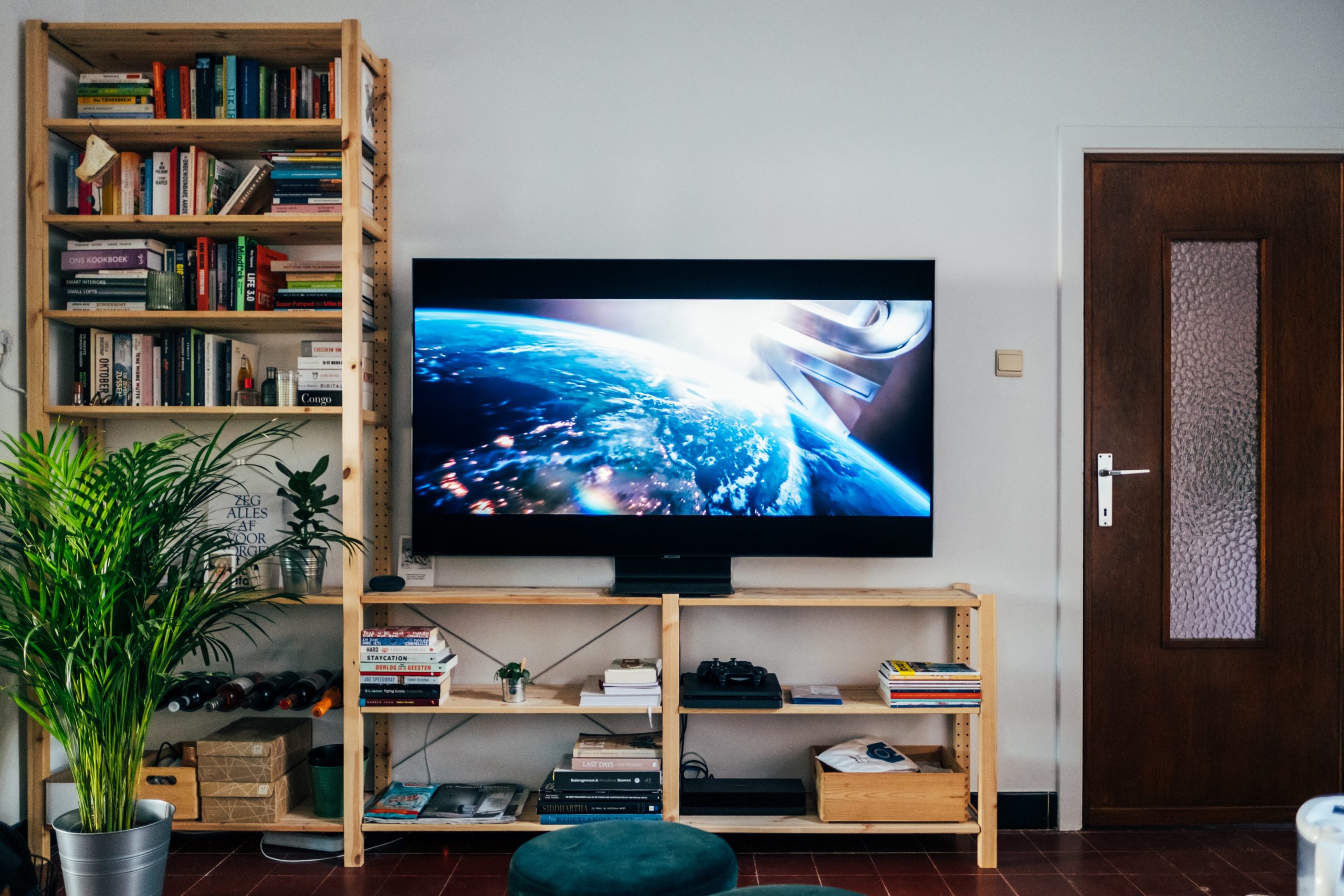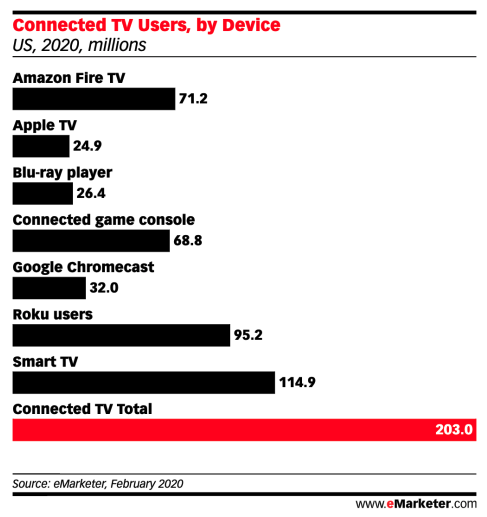
How to Approach Connected TV Advertising During This Difficult Time
With the huge increase in traffic on Connected TV platforms and YouTube (including YouTube on TV) during this time when people are staying at home, we’re getting a lot of questions about CTV from brands and agencies. Here are some questions we’re getting — along with answers — to help you as you think about CTV.
What Is The Difference Between CTV And OTT?
OTT (over-the-top) refers to any streaming video content platform that operates outside of the traditional TV delivery (cable, satellite, etc.) and instead is delivered over the internet. OTT services can be delivered on any internet-connected device including connected TVs, mobile phones, tablets, or desktops and include services like Netflix, Hulu, and YouTube. CTV (Connected TV) refers to the actual device, a connected TV, which is connected either because it’s a smart TV or has a streaming device like an Amazon Fire stick, Roku, game console or another connected device. CTV advertising is executed through OTT services like YouTube on TV or Hulu that are targeted specifically on connected TVs.
Are CTV And OTT Platforms Seeing An Increase In Viewership During This Time?
Yes. Online streaming rates are at a record high, up 85% over March of 2019 and individual players like YouTube, Roku, Amazon, and Hulu are all reporting big increases. There is also a report that this crisis will lead to 47 million additional subscribers to streaming services that weren’t originally projected. Most importantly for advertisers, there is 25% more Connected TV ad inventory as a result of this increase in streaming.
How Should I test CTV?
As an extension of your digital video campaigns
The easiest way to dip your toes in CTV is to just test YouTube on TV as part of your normal YouTube campaigns. As of October 2018 you can target YouTube ads directly to YouTube on TV and get broken out reporting on how they performed vs. ads on other devices. This is a good place to start because YouTube has the largest reach of any ad-supported OTT platform right now according to ComScore. If you want to extend beyond YouTube, Amazon Fire TV and Roku are good places to start as they are two of the biggest ways people watch on connected TVs per the eMarketer chart below.

As an extension to TV campaigns
TV advisers have been feeling the pain of the shift away from TV viewership. According to Nielsen, there are 31% fewer available weekly 18 to 49 gross rating points (GRPs) across broadcast and cable television compared to just five years ago. This pain is exacerbated during this time when all major sporting events have been canceled. While we don’t recommend dropping TV advertising, it’s wise right now to find the right mix of TV and digital given how important every ad dollar is. TV creative can be re-purposed for digital as long as it follows a modern curve where it grabs attention and introduces the brand early. Most importantly, Google has a Reach Planner that helps advertisers plan the right mix of TV and YouTube to reach an advertiser’s audience.
As an extension to search campaigns
The advertising channel that has been most unaffected by the global crisis is search. Advertisers looking to expand the quality of their search campaigns during the crisis have the ability to run video campaigns on CTV and other devices that reach audiences based on their search behavior. A campaign run on YouTube and Amazon Fire TV can target audiences who are in-market for their product based on behavior and searches on the top three search engines in the world: Google, YouTube and Amazon. These ads could appear on Amazon Fire TV, YouTube on TV, as well as on YouTube on mobile, tablet and desktop.
Pixability can help you target audiences based on their search and in-market behavior on Google, YouTube and Amazon and run ads on Connected TV on Amazon Fire and YouTube on TV (as well as other devices for YouTube). For a deeper dive into testing Connected TV advertising, let’s connect — we’d love to hear from you and discuss more best practices around CTV advertising.